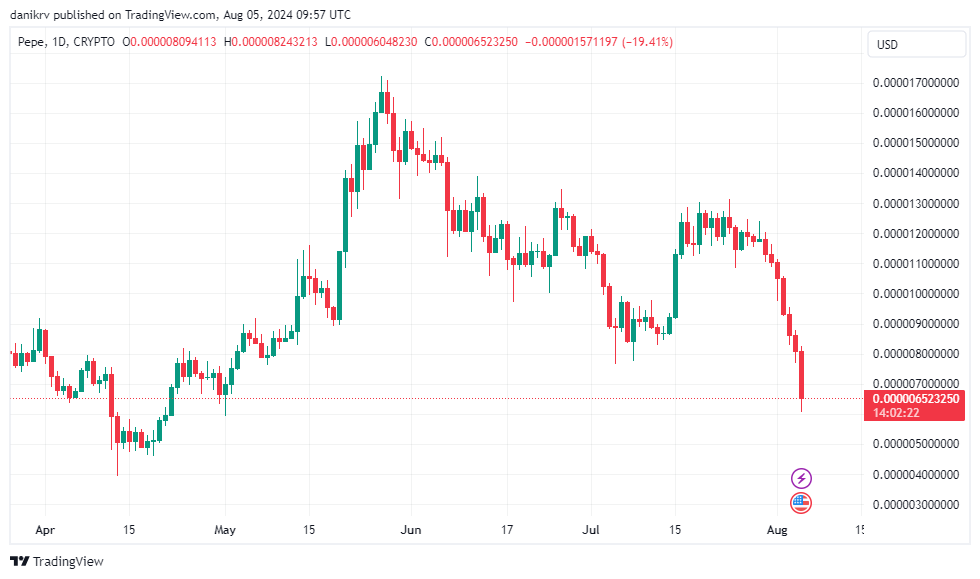TAI, PEPE, and SOL were among the biggest winners over the past month, but today’s crypto bloodbath wiped out their gains. The three leading cryptocurrencies are down by approx. 10%, 22%, and 16% today, respectively. Could it be time to buy the dip?
TAI is a strong sell across the board
TAI, the native token of TARS AI, soared in early June following the announcement of a listing and airdrop on Bitpanda. It reached an all-time high on June 6 but has fallen by more than 50% since then. Oscillators and moving averages indicate a strong sell.
The EMA 10 being lower than the EMA 20 indicates a short-term downtrend. Prices have decreased recently, causing the short-term average to drop below the medium-term average.
The EMA 20 is lower than the EMA 30, suggesting that prices have decreased over a slightly longer period. The medium-term trend is still bearish, as the EMA 20 is below the longer-term EMA 30.
The alignment of these EMAs indicates a bearish sentiment across both short and medium-term horizons. The asset has been experiencing a price decline, which all three moving averages reflect.
PEPE is seeing further damage

PEPE is seeing further losses today after a massive plunge on Friday. It was trading at $0.059401, down 10.81% compared to 24 hours earlier. Its price dropped by almost 22% last week, outlining a bearish tendency.
PEPE shows the same pattern as TAI regarding 10-, 20-, and 30-day moving averages, but oscillators are neutral.
Is there hope for Solana?
Solana is the most stable asset of the three. Still, the bloodbath hasn’t spared it. On August 1, Solana marked the fourth consecutive day of decline. It reached a multi-month high of $194 on Monday but rapidly reversed gains.
The SOL token lost support at 134.4156. The next support level to watch is 117.2521. At the time of writing, it’s trading for $120. If it falls below 117.2521, the bearish trend will continue.
TAI, PEPE, SOL: Time to buy the dip?
Buying the dip can be advantageous if the market downturn is due to temporary factors. Watch how the Israel-Hamas conflict unfolds and economic indicators, like employment data.












